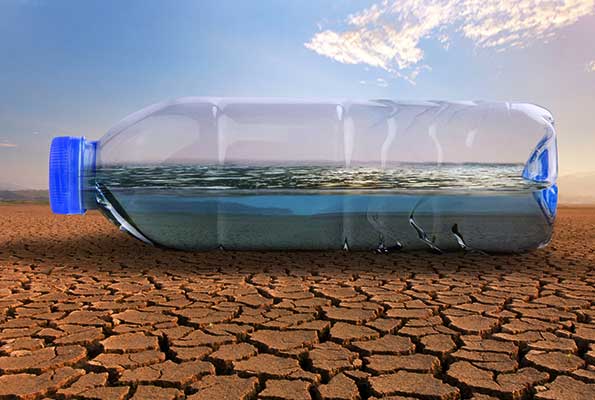According to new research, the Middle East and North Africa region is the most water-stressed region in the world, and by 2050, nations in this part of the world would experience extreme water scarcity.
According to research from the World Resources Institute, the demand for water is already growing alarmingly faster than the renewable supply.
According to the survey, more than 80% of the water supplies in the region are used for irrigation, livestock, industrial, and domestic requirements, putting almost 83% of the population in the area under serious water stress.
According to the paper, even a brief drought may cause havoc and completely deplete supplies, forcing governments to stop providing water to citizens.
Bahrain was first in the report’s rankings for the Gulf region.
Along with Lebanon and Cyprus, Kuwait, Oman, and Qatar, all finished in the top six.
According to the institute, the lack of availability and high demand from household, agricultural, and industrial usage are the main causes of water stress in these nations.
WRI used a global hydrological model to estimate how renewable water sources like rivers and lakes, which are replenished through precipitation, might change under future climate change scenarios.
Following the UAE in the WRI list were Saudi Arabia, Israel, Egypt, Libya, and Yemen.
With 74% of its countries under water stress, South Asia is the second most pressured area.
Existing water shortages in the area are destroying lives and destroying lakes, rivers, and crops.
As the WRI analysis demonstrates, the most vulnerable countries from the crisis will be those that are impoverished and have experienced recent violence and have the fewest resources to address the issue.
According to a United Nations’ official’s warning from May 2023, if current trends continue, Iraq will only be able to supply 15% of its water demands by 2035.
As per the latest stats, 90% of MENA children are currently living in high-water stress areas, while 14% of the region’s GDP will be lost due to the crisis by 2050. Some 11 of the 17 most water-stressed nations in the world are right now in MENA.
The United Nations has identified Iraq as the fifth most vulnerable country in the world to climate change.
Dam construction initiatives in neighbouring Iran and Turkey, which pose a danger to Iraq’s water supplies, have made this situation worse. Iraq’s two main sources of water, the Tigris and Euphrates rivers, accounting for over 90% of the country’s freshwater reserves, have significantly declined over the years. Farmers have been forced to abandon their centuries-old irrigation practices to more modern systems that reduce water use by almost half.
One of the most affected sectors by water scarcity in Iraq is agriculture, which makes up less than 4% of the country’s annual GDP of 208 billion, as of 2021, but is its main income source for at least a third, or 14 million, of the nation’s 44 million population.
Jordan, another water-scarce nation, has now seen its water availability per person (on a yearly basis) going down as low as 100 cubic metres, well short of the 500 cubic metres that the UN classifies as “absolute scarcity”.
To counter this, the Abdullah II government is seeking to build a multibillion-dollar desalination plant using foreign investment, to funnel water from the southernmost city of Aqaba to the capital Amman, as per the reports from The National.
However, the project’s tender process has been stalled for over three years, as the authorities struggle with illegal water use, theft and leaks in the existing infrastructures.
“Rainfall has also reduced over the years with farmers feeling the greatest effect, their production falling significantly due to the lack of water. Some farmers have moved away from traditionally grown, more water-demanding crops towards those that require less water, such as strawberries and dates. Demand in the Gulf makes such produce more profitable for the farmers and puts less strain on the mostly desert, arid kingdom’s water supply,” the report stated further.
Six million people in Lebanon are in danger of developing health issues as a result of water shortages, according to a recent Unicef alert.
Farmers told The National that each season is like “playing the lottery,” indicating that agriculture has already suffered.
The WRI links Iran’s elevated vulnerability to climate change to years of poor management and unsustainable water use.
Protests and “tensions that will only grow as water stress deepens” have already resulted as a result, according to the WRI.
According to the institute, Sub-Saharan Africa will experience the greatest shifts in water demand between now and 2050, with demand increasing more quickly than everywhere else in the globe.



